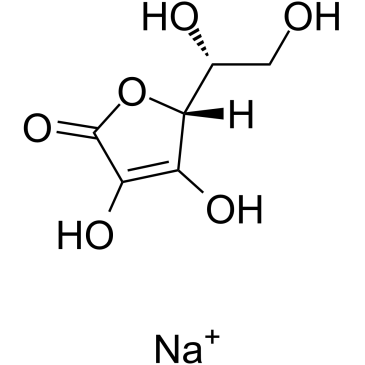Sodium erythorbate |
| Catalog No.GC38702 |
Sodium erythorbate (D-Isoascorbic acid sodium), produced from sugars derived from different sources, such as beets, sugar cane, and corn, is a food additive used predominantly in meats, poultry, and soft drinks.
Products are for research use only. Not for human use. We do not sell to patients.

Cas No.: 6381-77-7
Sample solution is provided at 25 µL, 10mM.
Sodium erythorbate (D-Isoascorbic acid sodium), produced from sugars derived from different sources, such as beets, sugar cane, and corn, is a food additive used predominantly in meats, poultry, and soft drinks.
Average Rating: 5 (Based on Reviews and 30 reference(s) in Google Scholar.)
GLPBIO products are for RESEARCH USE ONLY. Please make sure your review or question is research based.
Required fields are marked with *




















